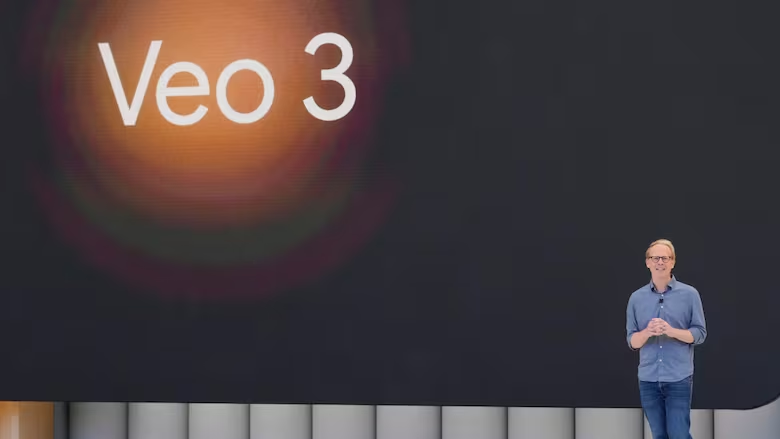A recent demonstration by public broadcaster CBC News has revealed that an artificial intelligence video tool can produce entirely fabricated news segments so realistic that even seasoned viewers struggle to tell them apart from true broadcasts. In the example released yesterday, a news anchor delivers dramatic updates about a wildfire raging across Alberta, her breaths clearly audible as she pauses between sentences, and a detailed map behind her shows animated flames spreading across central Canada. The footage appears to come from a live feed, but in fact the entire clip comes from a Google research prototype known as Veo 3.
Since its debut early this year, Veo 3 has shown remarkable progress compared to earlier video generators. It can create full news reports complete with convincing speech, ambient sounds, and visuals that follow physical laws, so flames look like they move realistically and smoke drifts in believable patterns. Moreover, the tool can switch camera angles, mimic studio lighting, and add on-screen graphics that match typical broadcast standards. Media scholars say these features eliminate the flaws that once gave AI videos away, such as unnatural lighting or jerky movement.
Researchers have already warned that this kind of technology could accelerate the spread of false information across social platforms. A recent study by the Turing Institute found that users generated AI-powered parody clips of political rallies and shared them widely during local elections, sometimes even drawing mentions from pundits on live television. In one case study, a fabricated snippet of election workers tearing up ballots circulated on social media and sparked public outrage before fact-checking sites debunked it. Such incidents highlight how digital literacy alone may not suffice to stem misleading content when the visuals appear so authentic.
Angela Misri, an assistant professor at Toronto Metropolitan University who focuses on AI ethics, cautioned that tools like Veo 3 could push society into uncharted territory around trust. She pointed out that viewers often rely on what they see and hear before they check facts online, and if they cannot distinguish AI-made scenes from real footage, they may accept false reports as truth. “We may soon find ourselves in a position where our instincts betray us,” she warned in an interview, “and that risk goes beyond politics to any topic where images can sway public opinion.”
Industry regulators have begun to take notice, but legal frameworks still lag behind the pace of innovation. In April, lawmakers passed legislation criminalizing non-consensual deepfake content used for adult exploitation, but they have not yet addressed broader applications of AI video tools used to spread false news. Technology companies maintain that they deploy content filters and watermarking techniques, yet watchdog groups say these measures often fail to flag sophisticated fabrications before they go viral.
In response to rising concerns, several major social media platforms have started testing AI detection systems and labeling unverified videos. However, these systems sometimes misidentify genuine footage as suspicious or miss cleverly disguised fakes. Meanwhile, developers of tools like Veo 3 argue that their technology can also help news outlets produce quick, low-cost content for routine reporting tasks, such as summarizing weather events or translating live coverage into multiple languages. They suggest that the same advances posing risks for misinformation could benefit accessibility and efficiency in journalism.
Nevertheless, experts emphasize that the emergence of ultra-realistic AI video generators demands new strategies for verification and public awareness. They urge news organizations, educators, and technology firms to collaborate on improving digital forensics, teaching viewers to look for verification cues, and embedding clear provenance data into video files. Only by combining technical safeguards with critical media skills, they argue, can society adapt to a future where seeing no longer guarantees believing.
As AI continues to evolve at a breakneck pace, the challenge of distinguishing genuine news from fabricated reports will only grow more urgent, and the tools designed to empower storytelling may also become the most potent catalysts for deception.

